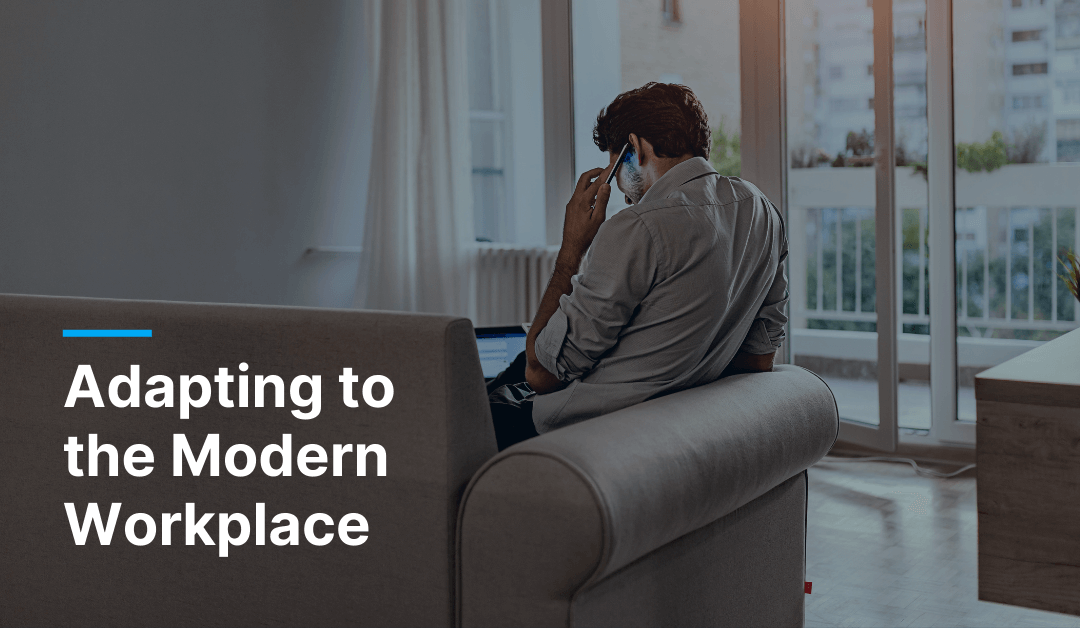Disclaimer: Flexible work arrangements were put into place by Lighthouse Lab Services as a response to the Covid-19 pandemic. While the ability to create flexible work plans with the approval of supervisors and Human Resources remains in place for many Lighthouse employees, those arrangements may be subject to change in the future. The following article describes one employee’s experience with these flexible work arrangements.
By: Bethany Swan, Administrative Coordinator, Lighthouse Lab Services
The Covid-19 pandemic has changed the face of a traditional workplace forever. Companies, by needing to arrange for employees to work from home for everyone’s safety, realized a lot of the work they thought could be done only in the in-person office setting could be done just as efficiently on a remote basis using modern applications and programs. Video conferencing exploded as employees fielded calls and virtual meetings in their bedrooms, home offices, and kitchens. Legal signatures could be obtained from coworkers using digital signature applications.
Some didn’t thrive as well within the isolation of their homes, missing the morning greetings, chats around the coffee pot, and brainstorming sessions. But others found their stress levels decreased, and productivity is now at an all-time high for many companies. How can both types of employees be served? By using a Hybrid Work-Flex Model in response to the Covid-19 pandemic, Lighthouse Lab Services has enjoyed increased productivity and balance for its employees by arranging, when possible, the ability for most employees to work in an environment that yields the best result for both the employee and the company.
A new approach to managing stress
Stress in a workplace environment is to be expected, at least to some extent. It means you’re paying attention and that you are engaged in the current activity around you. But as we all know, too much stress can lead to “dysfunctions, diseases, and performance-related consequences (1).” With each employee having a different personality, stress triggers, and stress reactions, finding a workplace setting that can be healthy for such a vast spectrum of employees is difficult.
Most people put themselves into categories like introvert and extrovert, focusing best in high-paced or steady work environments, and they identify with various other opposing personality descriptors that explain how they best process information and come to conclusions while working. In this new age of workplace practices, where does that leave you and your company when considering the differences amongst your employees’ preferences and work styles? How do you find the balance for optimal employee happiness while still being a productive and profitable company?
Lighthouse’s Hybrid Work-Flex Model allows most employees to work with supervisor and Human Resources to determine the best work environment for their job performance, overall well-being and efficiency, which, in turn, has raised the growth and profit of the company. By giving many employees the option to work from home, a co-working space, or traditional office, most Lighthouse employees can discuss options to work in the environment in which they are most effective. For some, working from home can help relieve the struggle of balancing work and private life, while others find that having a separate office space keeps the pressure of office stress out of their personal time. Employees’ ability to arrange the optimal option for their work environment, in most instances, is the most important aspect of this model.
The benefits to employee wellbeing
As someone who has worked in the traditional office setting and is now working remotely full time, I can tell you a lot of my life’s stress and problems in previous jobs stemmed simply from having to physically go into an office. Commuting on public transit could take up an hour or more of my day, not to mention the stress of traveling on public transportation and in close proximity to others, especially after experiencing the pandemic.
Additionally, I previously worked in a closed cubicle in a room with no windows at all, and in the winter, would arrive in the dark and leave after dark. This affected my diet, as I barely had the energy to pack something healthy for lunch and was oftentimes too tired when I got home to cook a solid meal. You can see how being forced to work in an office created a very negative domino effect on other aspects of my life and physical and mental health.
Now, being afforded the ability to work remotely through our Hybrid Work-Flex Model, I can be productive and efficient at work, as well as healthier physically and mentally, from the comfort of my apartment. Without the commute, getting to work is so much easier since I walk to my desk and turn on my computer; I have not had to utilize one sick day in my current job simply to recharge from the daily grind of the previous workday. My overall health and happiness are at an all-time high, and I couldn’t be more grateful to Lighthouse for giving me the chance to find a way of working that provided me that opportunity.
Sources:
- Coworking Spaces: The Better Home Office? A Psychosocial and Health-Related Perspective on an Emerging Work Environment Swantje Robelski 1, *, †, Helena Keller 2,† , Volker Harth 1 and Stefanie Mache
- Workplace Phobic Anxiety as a Mental Health Phenomenon in the Job Demands-Resources Model Michela Vignoli,1 Beate Muschalla,2 and Marco Giovanni Mariani
- Work stress prevention needs of employees and supervisors Bo M. Havermans1,2, Evelien P. M. Brouwers3, Rianne J. A. Hoek1,2, Johannes R. Anema1,2, Allard J. van der Beek1,2* and Cécile R. L. Boot1,2
- Personality Styles: Why They Matter in the Workplace *Melissa Taylor*
- Fritz, C., Ellis, A. M., Demsky, C. A., Lin, B. C., & Guros, F. (2013). Embracing work breaks: Recovering from work stress. Organizational Dynamics, 42(4), 274–280. https://doi.org/10.1016/j.orgdyn.2013.07.005
